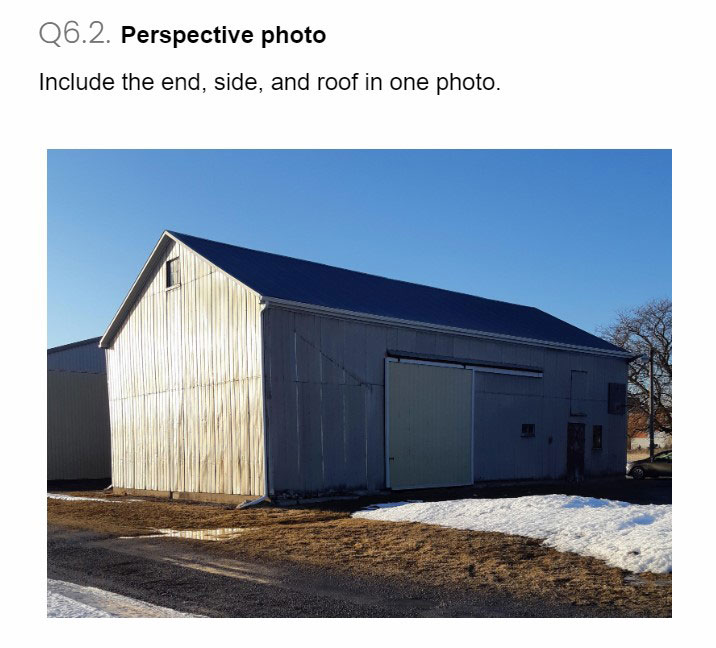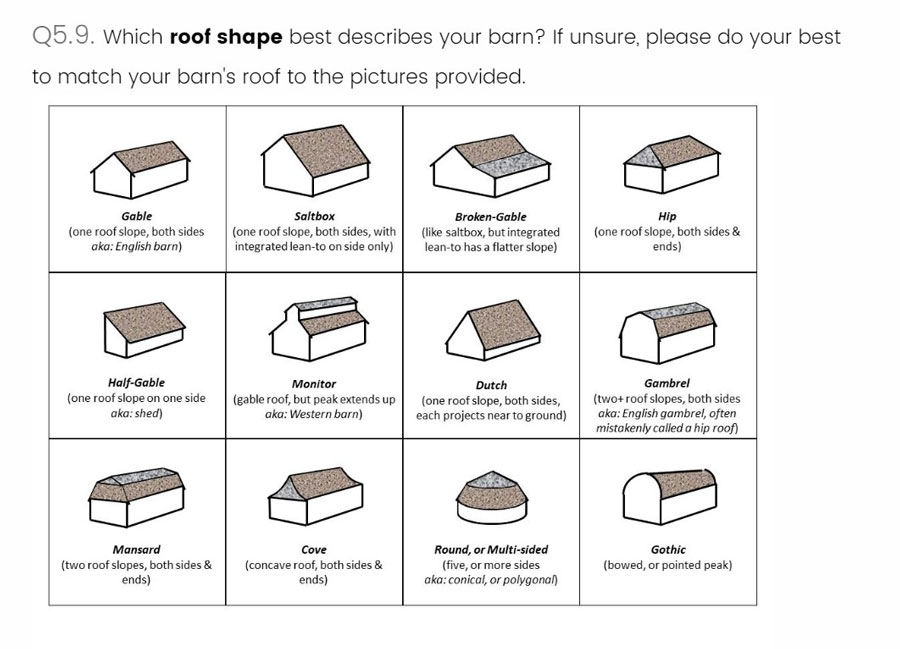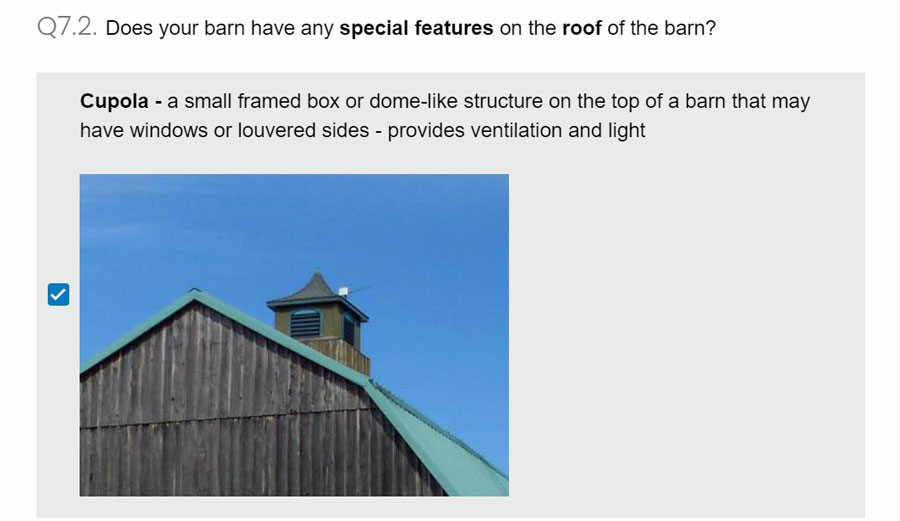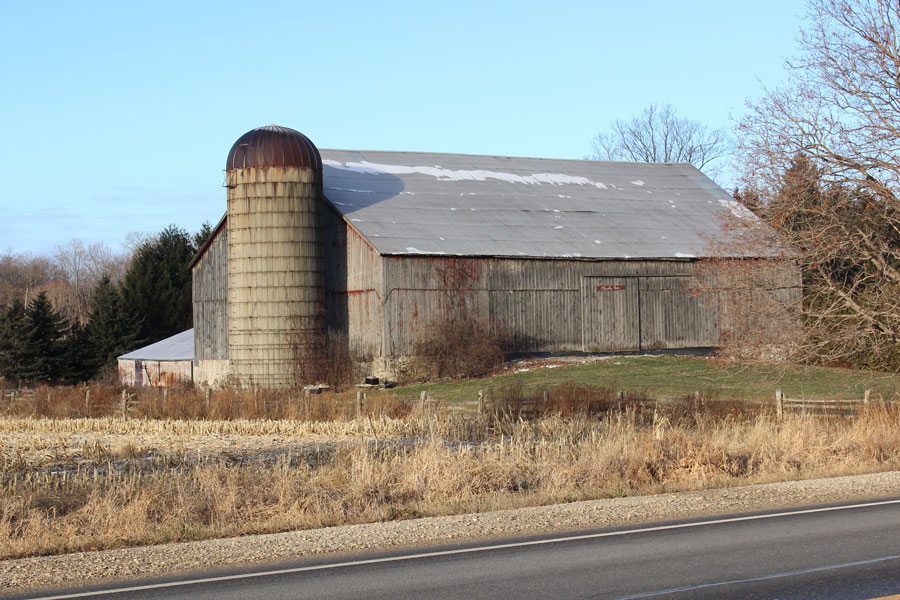WELLINGTON COUNTY – Barns across Ontario are disappearing.
According to Ontario Barn Preservation (OBP) president Hugh Fraser, Ontario had almost half a million barns in 1900, but now he estimates just thousands of those old barns are left standing.
OBP is an entirely volunteer-run, not-for-profit organization dedicated to preserving, documenting and promoting Ontario barns.
The organization partnered with the University of Guelph to launch Your Old Barn Study to collect information about barns built in Ontario before the 1950s.
Fraser, a retired agricultural engineer who grew up on a dairy farm, said it was his idea to create an online portal where barn owners can input photos and details about their old barn.
Valuable data
He hopes to generate a wealth of information for future researchers and to help owners learn more about their own barns.
“It’s better to try to train a large army of barn owners” to collect the data, Fraser said, rather “than to have a tiny little army of barn experts do it, because there really aren’t many barn experts out there.”

While completing the Your Old Barn Study, barn owners are taught how to accurately document their barn, including how to take clear photos from a range of perspectives. Image from Ontario Barn Preservation’s Your Old Barn Study
Through the data collected, he said barns will be saved “in the virtual world long after they’re gone from the physical world.”
Fraser said he has spent time in thousands of barns in his lifetime and he has written about many of them, so he knows firsthand the interesting stories found inside.
The data will give historians a stronger sense of the movement of people, Fraser said, by documenting what types of barns were popular in different areas of the province at different times in history.
Though only a few dozen barns are documented in the study so far, Fraser aims to eventually collect information about as many of the province’s old barns as possible.
University of Guelph
Six students from three experiential courses at the university collaborated on the study, led by professor Kim Martin.
She said the first two students worked on developing the study, and the next four went out to barns and filled in the survey.
One of those students, Randy Bagg, went on to become director of the OBP.
Fraser said when Rockwood farmer Tim May, or “Farmer Tim” as he is better known, invited two of the students out to study his barn, it was the first time the students had stepped foot inside one.

For some University of Guelph students, supporting Ontario Barn Preservation with the Your Old Barn Study was the first ever opportunity they had to step foot inside a barn. Photo by Robin George
“They were like kids in a candy shop,” Fraser recalled with a chuckle.
After working together with Fraser and Martin to survey the first barn, the students were “almost giddy with excitement to (survey the second barn) on their own,” Fraser said.
Collaborating on the study helped students “think of history as still alive,” Martin said, rather than reading about history in a book.
She said barns are “probably one of the fastest disappearing rural elements.
“If we don’t document (barns) now, we’re not going to know the ins and outs.”
Completing the survey
After a year and a half of creating and testing the census, “now it’s out there, public,” and ready for more people to complete, Martin said.
The survey, created with University of Guelph software, takes about an hour to complete, and saves automatically so people can leave and come back to it later.
There is also a printable version of the census that is coming soon to the OBP website.
“We try to be as welcoming as we can,” Martin said, and OBP can connect barn owners with volunteers to support them with the census if needed.
Throughout the survey is information and guidance to help people take clear photos and answer questions accurately. All survey questions are optional, and submitting “a little information about a barn is better than no information,” Fraser said.

Your Old Barn Study illustrates how barn owners can identify different features, including the roof shape that best describes their barn. Image from Ontario Barn Preservation’s Your Old Barn Study
They just ask people to “finish the survey to the best of their ability,” Martin added.
A barn doesn’t have to be standing today to be included in the study, Fraser noted – old photos and memories can provide enough information to be worth completing the survey.
“Perhaps grandpa built a barn,” he said, that someone feels sorry they weren’t able to preserve. “Well here’s a way to honour grandpa.”
Fraser personally documented a barn that has not been standing for 30 years.
The survey includes space to record oral history, such as stories of interesting events that took place in the barn, Martin said.
It also asks about “barns taking on new life as rural life changes,” she added, mentioning barns that have become wedding destinations or Airbnbs.
Though some findings from the study will be made public, identifying features will be kept confidential and secure to protect barn owners’ privacy.

Your Old Barn Study teaches barn owners how to identify special features on their barns including cupolas, dormers, hayhoods, and lightening rods. Image from Ontario Barn Preservatino’s Your Old Barn Study
Award-winning
Earlier this year, the Your Old Barn Study was a co-recipient of the Architectural Conservancy Ontario Public Education and Engagement Award.
“We don’t even know all the ways this information could help us in the future,” Fraser said, and with technological advancements he imagines a time that barns could be re-created from the data collected using 3-D printers.
For more information or to complete the survey, visit ontariobarnpreservation.com/barn-study.
Martin recommends doing so soon before cold weather makes completing the survey more difficult.
Old barns are an important part of the community’s history, Martin said, “so whether (owners) reach out to us or do it themselves they are contributing to the community and documenting history.”
Fraser is confident people will also learn things they didn’t know about their own barn while completing the survey, and learning more about a barn often leads people to want to save it.
He’s also confident people will have a lot of fun filling it in – “it’s like a scavenger hunt, almost,” he said, and would be a fun activity for grandparents to do with their grandchildren.




